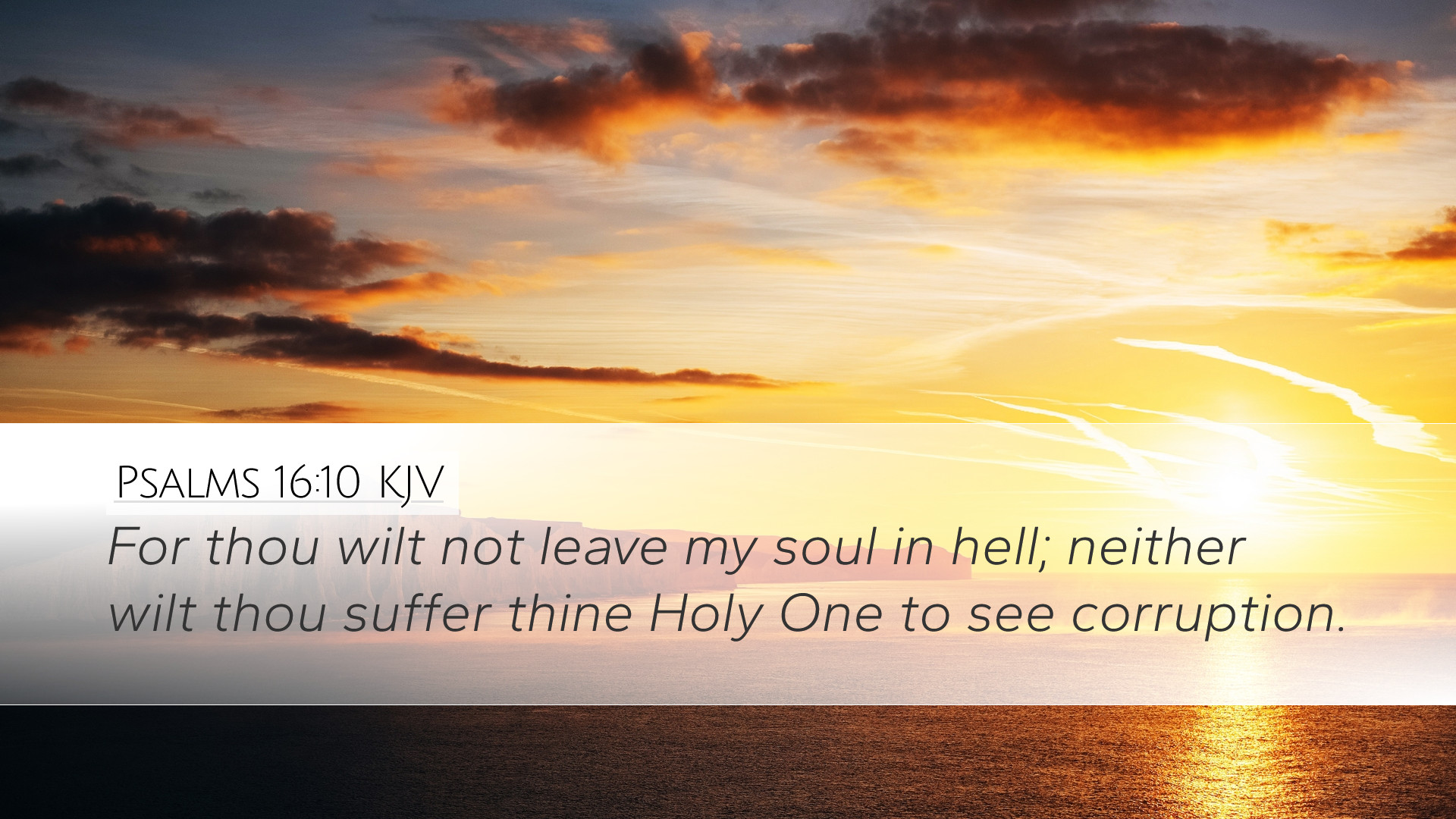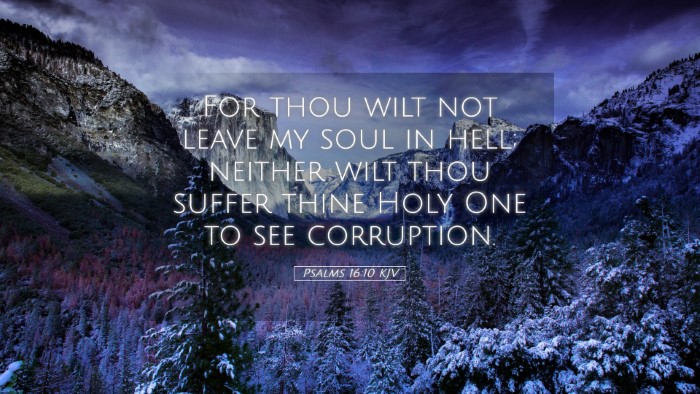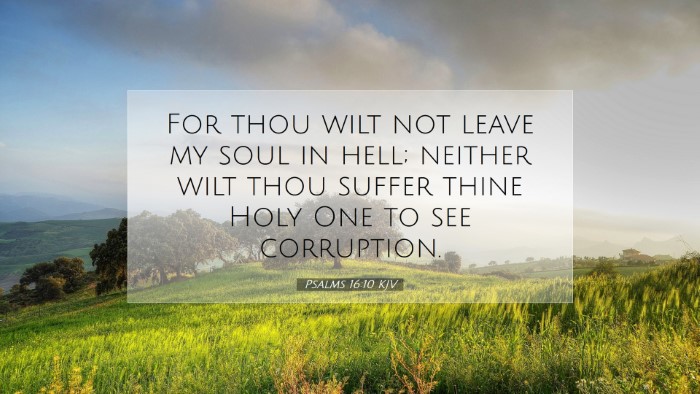Psalms 16:10 - Commentary Summary
Bible Verse: "For you will not abandon my soul to Sheol, or let your holy one see corruption."
Introduction
Psalms 16:10 presents a profound declaration of faith and assurance from the psalmist regarding God's protection and the hope of resurrection. This verse has garnered significant attention in theological studies because it speaks directly to the themes of life, death, and the afterlife, informing both Old Testament understanding and New Testament revelation.
Contextual Analysis
This verse is part of a larger psalm attributed to David, where he expresses his trust in God amidst uncertainties and dangers. The overall theme revolves around seeking refuge in God, implying a deep relationship with the Divine, characterized by faith and reliance.
Historical Context
Scholars agree that this psalm reflects a time of personal peril for David. His acknowledgment of “Sheol” points to the biblical understanding of the underworld, a place where souls were believed to reside after death. By declaring that God will not abandon his soul to Sheol, the psalmist signifies a confident expectation of deliverance beyond death.
Theological Implications
From a theological perspective, this verse speaks directly to God's covenant relationship with Israel. The assurance that the holy one will not see corruption hints at the concept of divine preservation and sustenance, which is foundational to the faith of the Jewish people.
Commentary Insights
Matthew Henry's Commentary
Matthew Henry emphasizes the psalmist's confidence in divine protection. He states that “the soul, as it is the most noble part of a man, must be preserved.” Henry points out that the assurance of not seeing corruption reflects God’s promise of eternal life and the hope of resurrection, underscoring that true believers will experience preservation in life and beyond.
Albert Barnes' Notes on the Bible
Albert Barnes interprets this verse as a clear expression of the psalmist’s assurance that God will not allow his faithful ones to remain in the grave forever. He notes that this phrase is often viewed as a prophecy concerning Jesus Christ, who was raised from the dead and did not experience corruption. Barnes highlights the significance of the "holy one," interpreting it as a reference to the Messiah’s ultimate victory over death.
Adam Clarke's Commentary
Adam Clarke elaborates on the notion of "Sheol," explaining it as a state of death rather than a place of punishment. He misinterprets the word by stating its use indicates that the psalmist gains confidence from the belief that even in death, God’s righteousness prevails. Clarke’s insights acknowledge the pivotal nature of this verse in affirming God’s sovereignty over life and death, and the profound hope believers have in eternal life.
Applications for Today
The significance of Psalms 16:10 extends beyond its historical and theological context; it speaks profoundly into the contemporary believer's life. The verse provides assurance amidst fear and uncertainty about death, inviting believers to place their trust in God’s sustaining power.
- Faith in Divine Preservation: Believers can find comfort in knowing that God is faithful in preserving their souls, echoing the assurance of eternal security.
- Assurance Against Corruption: The promise that the holy ones will not see corruption invites theological reflection on resurrection and the hope of eternal life.
- Encouragement in Trials: The context of distress signifies that even in moments of despair, believers can take heart in God's promises and maintain their confidence in divine deliverance.
Conclusion
Psalms 16:10 encapsulates a critical aspect of biblical faith—the assurance of God’s watchful presence over life and death. The amalgamation of insights from respected public domain commentaries illuminates the verse’s depth, reinforcing its relevance for pastors, students, theologians, and scholars alike. As believers reflect on this promise, they are reminded of God’s unfailing commitment to His people and the hope that transcends the grave.


